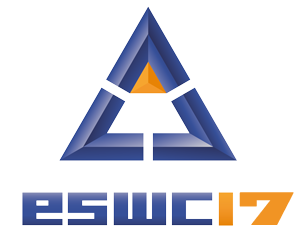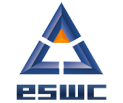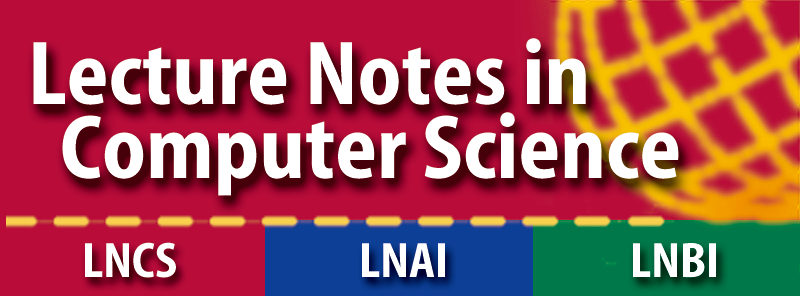EU Project Networking Session
The project networking track of ESWC2017 will provide an opportunity for
* Knowledge sharing among EU and national projects
* Data and technology transfer between projects
* Presentation and discussion of project requirements and results with ESWC participants
* Discussion about funding opportunities such as H2020 and ERC
Also, it will include a presentation by a representative of the European Commission on the European Research Council (ERC) and ERC funding schemes.
Schedule
Wednesday, 31 May 2017
14:00 - 14:45 The European Research Council: Funding opportunities for investigator-driven frontier research (Miklos Nagy)
The European Research Council: Funding opportunities for investigator-driven frontier research
The European Research Council (ERC) supports creativity and excellence of European research at the frontiers of knowledge. ERC implements a flagship component of Horizon 2020 (Excellence Science pillar), the European Union's Research Framework Programme for 2014 to 2020. In the last 10 years ERC has funded almost 7000 researchers.
With its investigator driven approach, the ERC allows researchers to explore novel research directions, without pre-defined research priorities. This approach supports the development of novel research ideas and directions with a great degree of flexibility. Independent researchers of any age and career stage and from anywhere in the world can apply for attractive long-term funding. The only criterion for selection is scientific excellence.
The ERC awards flexible, long-term funding for a period of up to five years for the different Grants dedicated to the Principal Investigators at different stages of their scientific career.
The maximum grant varies by grant types:
| Grant type 2018 |
Maximum |
Additional funding for scientists moving to Europe |
Eligible Applicant |
Requirement |
|
Starting |
€ 1.500 000 |
€ 500 000 |
PhD awarded between 2 and 7 years prior to 1st January 2018 |
Work time in Europe, at least 50% |
| Consolidator |
€ 2.000 000 |
€ 750 000 |
PhD awarded between 7 and 12 years prior to 1st January 2018 |
|
|
Advanced |
€ 2.500 000 |
€ 1000 000 |
No restriction |
ERC will also reintroduce the Synergy grant in 2018, which enables top researchers with complementary skills to address challenging research problems as a team.
All relevant information about the submission procedures, eligibility, deadlines and evaluation process will be provided in the presentation.
 Miklos Nagy is a project advisor at the European Research Council Executive Agency in the Computer Science and Informatics panel (PE6), which covers proposals in informatics, information systems, computer science, scientific computing and intelligent systems. He received his PhD in Computer Science from the Knowledge Media Institute of the Open University, UK.
Miklos Nagy is a project advisor at the European Research Council Executive Agency in the Computer Science and Informatics panel (PE6), which covers proposals in informatics, information systems, computer science, scientific computing and intelligent systems. He received his PhD in Computer Science from the Knowledge Media Institute of the Open University, UK.
14:45 - 15:30 Project Presentations I:
1. Data4UrbanMobility: Data-Driven Mobility Services for Smart Cities
2. KNOWMAK: Knowledge in the Making in the European Society
3. ALOOF: Autonomous Learning of the Meaning of Objects and its Application to Robotics
4. EW-Shopp: Supporting Event and Weather-based Data Analytics and Marketing along the Shopper Journey
5. VALCRI: Applying Semantic-web Technologies to Visual Analytics for Criminal Intelligence
6. The ALIGNED Method and Tools for Engineering AGILE Big Data Systems
7. BigDataOcean - Exploiting Oceans of Data for Maritime Applications
Coffee Break
16:00 - 16:45 Project Presentations II:
8. SPECIAL: Scalable Policy-awarE Linked Data arChitecture for prIvacy, trAnsparency and compLiance
9. SUPERSEDE - SUpporting Evolution and Adaptation of PERsonalized Software by Exploiting Contextual Data and End-user Feedback
10. euBusinessGraph
11. InVID - In Video Veritas, Verification of Social Media Video Content for the News Industry
12. WDAqua ITN: Answering Questions using Web Data
13. IASIS: Big Data for Supporting PrecisionMedicine and Public Health Policy-Making
16:45 - 17:30 Project Speed Dating
VALCRI - Visual Analytics for Sense-Making in Criminal Intelligence Analysis

The VALCRI project aims at developing technologies, methods and a demonstrator system for semi-automated criminal-intelligence analysis. VALCRI takes a visual analytics approach to support police analysts in finding connections and patterns in large volumes of data. VALCRI uses semantic-web back-end technologies to integrate, store, retrieve, and analyse information.
website: http://valcri.org/
Presenter at ESWC: Henrik Eriksson, Linköping University
Project contact for enquiries: B.L. William Wong, w.wong@mdx.ac.uk
Funding instrument: FP7
Start date: 1 May 2014
Duration: until 30 June 2018
iASiS-Integration and analysis of heterogeneous Big Data for Precision Medicine and suggested treatments for different types of patients

iASiS is a 36-month H2020-RIA project that started in April 2017, with the vision of turning clinical, pharmacogenomics and other big data into actionable knowledge for personalized medicine and health policy-making. This will be achieved by integrating and analyzing data from disparate sources, including genomics, electronic health records, and bibliography. The iASiS system will offer data management and analytics techniques that will enable decisions to be made, allowing for diagnosis and treatment to be personalized to each individual, as well as for the support of public health policy makers.
website: http://project-iasis.eu
Presenter at ESWC: Grigorios Tzortzis, National Centre for Scientific Research (NCSR) "Demokritos", Greece.
Project Contact for Enquiries: Dr. George Paliouras (paliourg@iit.demokritos.gr), National Centre for Scientific Research (NCSR) "Demokritos", Greece.
Funding instrument:
H2020-SC1-PM-18-2016 - Big Data supporting Public Health policies. Research and Innovation Action (RAI)
Starting date: 01/04/2017
My project can offer to others the following (tool, dataset, technologies, etc; max 5 items)
What we offer: An infrastructure to integrate Pharmacogenomics, Clinical and other data.
What it provides: Pharmacogenomics, Clinical and other data will be integrated into the iASiS knowledge graph, and semantically enriched using the iASiS vocabulary.
Link for more info: http://project-iasis.eu
What we offer: An infrastructure to integrate data analytics tools.
What it provides: Data analytics tools will be integrated into the iASiS infrastructure, thus empowering iASiS with prediction and pattern discovery capabilities.
Link for more info: http://project-iasis.eu
My project is interested in the following (tool, dataset, technologies, etc; max 5 items)
What we are interested in: Pharmacogenomics and Clinical data.
What it must provide: Datasets with information about lung cancer or Alzheimer’s patients. The datasets may include clinical record data, images related to the records, and genomic data.
How it would be used: Data will be integrated in the iASiS knowledge base. Privacy, access control, and security policies will be enforced during all the steps of data management and analytics.
What we are interested in: Data analytics tools.
What it must provide: Data analytics components able to run on top of the iASiS knowledge base and uncover unknown patterns in patients with lung cancer or dementia.
How it would be used: Data analytics components will be integrated into the iASiS architecture, thus enabling iASiS users to identify and uncover unknown patterns that support precision medicine and health policy-making.
SUPERSEDE: SUpporting evolution and adaptation of PERsonalized Software by Exploiting contextual Data and End-user feedback

SUPERSEDE is an H2020 project that aims at providing methods and tools to enhance decision-making for the evolution and adaptation of software applications and services. This is performed by analyzing end-user feedback and monitoring data with an ultimate goal of improving end-users' Quality of Experience (QoE).
Website: www.supersede.eu
Presenter at ESWC: Jovan Varga, Universitat Politècnica de Catalunya, BarcelonaTech
Project contact for enquiries: www.supersede.eu/contact/
Funding instrument: H2020-ICT-2014-1
Start date: 1/5/2017
Duration: 3 years
My project can offer to others the following:
What we offer: The SUPERSEDE toolkit related to the project context, as well as research results documented in the published scientific papers (e.g., Nadal, Sergi, et al. "An Integration-Oriented Ontology to Govern Evolution in Big Data Ecosystems.", DOLAP 2017)
What it provides: SUPERSEDE supports making of the customized software applications and more details can be found at www.supersede.eu/owncloud/index.php/s/cvFabVIQdWGnEoH
Link for more info: www.supersede.eu
Usage rights (e.g. license): Apache Licence 2. (Note: Still under discussion.)
My project is interested in the following:
What we are interested in: Use cases to evaluate the SUPERSEDE platform or its elements (e.g., a dataset to be analyzed with our Big Data tool, or a use case on release planning where we offer a tool to support it).
What it must provide: The specification of the use cases (and/or datasets).
How it would be used: For scientific purpose, i.e., validating the techniques developed in SUPERSEDE.
Enabling the European Business Graph for Innovative Data Products and Services (euBusinessGraph)
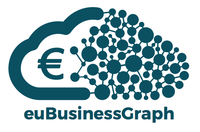
euBusinessGraph represents a key initiative to simplify the cross-border and cross-lingual collection, reconciliation, aggregation, and provisioning and analytics of company-related data from authoritative and non- authoritative public or private sector sources, with the aim of enabling cross-sectorial innovation.
Website: http://eubusinessgraph.eu
Presenter at ESWC: Marko Grobelnik, JSI, Slovenia
Project contact for enquiries: Dumitru Roman, dumitru.roman@sintef.no
Funding instrument: European Union’s Horizon 2020 research and innovation programme under grant agreement No 732003
Start date: 01.01.2017
Duration: 30 months
My project can offer to others the following
What we offer:
- Unique data, primarily company-related data
- Tools for data management (extraction, cleaning, storage, knowledge graph generation, publication, ...)
- Data-driven business products and services expertise
My project is interested in the following
What we are interested in:
- Users of company-related data
- Ideas for products/services using company-related data
- Ontologies for company-related data
BigDataOcean - Exploiting Oceans of Data for Maritime Applications
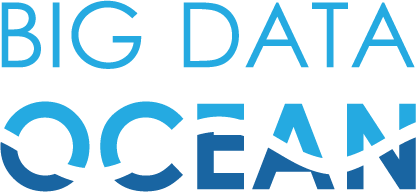
The main objective of the BigDataOcean project is to enable maritime big data scenarios for EU-based companies, organisations and scientists, through a multi-segment platform that will combine data of different velocity, variety and volume under an inter-linked, trusted, multilingual engine to produce a big-data repository of value and veracity back to the participants and local communities.
Website: http://www.bigdataocean.eu
Presenter at ESWC: Ioanna Lytra, University of Bonn
Project contact for enquiries: Dimitris Askounis, Project Coordinator askous@epu.ntua.gr
Funding instrument: European Union Horizon 2020 research and innovation programme
Start date: 01/01/2017
Duration: 30 months
My project can offer to others the following
What we offer: BigDataOcean platform
What it provides: maritime related datasets for purchasing/downloading, Big Maritime Data repository, APIs and services on top of data for various stakeholders (companies, organisations, scientists) for purchasing/downloading
Link for more info: http://www.bigdataocean.eu
Usage rights (e.g. license): both open and proprietary data/services
What we offer: Service designer
What it provides: utility allowing the user to build big data exploitation services utilizing modular components and datasets
Link for more info: http://www.bigdataocean.eu
What we offer: “vessels’ certified path” service
What it provides: certified paths identification based on vessels' motion patterns, in order to act proactively and minimize threats at sea
Link for more info: http://www.bigdataocean.eu
My project is interested in the following
What we are interested in: maritime-related datasets
What it must provide: vocabularies, data, and metadata
How it would be used: enrich the BigDataOcean platform
What we are interested in: maritime-related services (i.e., analytics, visualizations, etc.)
What it must provide: services to be consumed by various stakeholders
How it would be used: enrich the BigDataOcean platform
What we are interested in: maritime-related organisations
What it must provide: act as early adopters of the BigDataOcean platform
Knowledge in the making in the European society (KNOWMAK)

The KNOWMAK project aims to develop a web‐based tool, which provides interactive visualisations and state‐of‐the‐art indicators on knowledge co‐creation in the European research area, structured around three integrative elements: research topics, by developing ontologies on Societal Grand Challenges (SGC) and Key Enabling Technologies (KET); actors, with a focus on the quadruple helix and the involvement of societal actors in knowledge co‐creation; and geographical spaces, with a focus on multiple level metropolitan, regional, national and European spaces and their interconnectedness.
Website: http://knowmak.eu
Presenter at ESWC: Diana Maynard, University of Sheffield
Project contact for enquiries: Benedetto Lepori, University of Paris Est and Università della Svizzera italiana, Lugano, benedetto.lepori@u-pem.fr
Funding instrument: Horizon 2020
Start date: 01.01.2017
Duration: 36 months
My project can offer to others the following
What we offer: rich set of data sources on European knowledge production (publications, patents, projects, social actors); tools for geolocalisation; a register of public-sector actors; a newly developed ontology dealing with Societal Grand Challenges and Key Emerging Technologies.
Usage rights (e.g. license): most of the data will be available for research purposes; software developed by the project will be under a creative commons license.
My project is interested in the following
What we are interested in: approaches and tools for semantic mapping of heterogeneous data sources using different kinds of language (e.g. different terms to represent the same concept) in the respective data sources,
How it would be used: in order to interlink the ontologies with the data sources.
SPECIAL (Scalable Policy-awarE Linked Data arChitecture for prIvacy, trAnsparency and compliance)
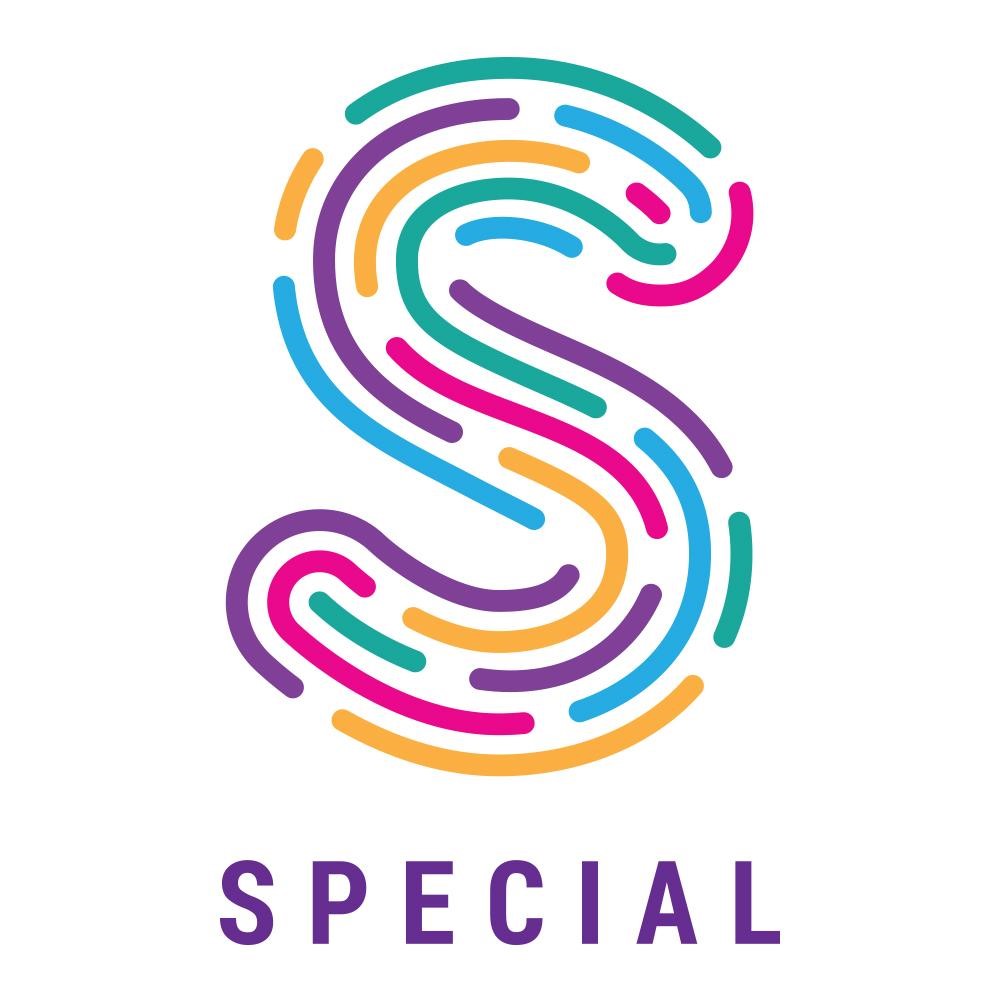
The SPECIAL project will address the contradiction between Big Data innovation and privacy-aware data protection by proposing a technical solution that makes both of these goals realistic. SPECIAL shall allow citizens and organisations to share more data, while guaranteeing data protection compliance, thus enabling both trust and the creation of valuable new insights from shared data. In order to support transparency across company borders Linked Data principles such as allocating unique IRIs to data resources and using these IRIs to associate metadata (i.e. policies and event data) with said resources will be employed.
Website: https://www.specialprivacy.eu/
Presenter at ESWC: Sabrina Kirrane, Vienna University of Economics and Business, Austria
Project contact for enquiries: Sabrina Kirrane,
Funding instrument: H2020 ICT-18-2016 Big Data PPP: privacy-preserving Big Data technologies
Start date: 1/1/2017
Duration: 3 years
My project can offer to others the following
What we offer: Data Processing Transparency Framework
What it provides: Transparent processing and sharing of personal data at scale (short term knowledge & medium term tools)
What we offer: Policy language
What it provides: Representing and reasoning over policies (short term knowledge & medium term tools)
What we offer: A framework which combines encryption with HDT compression techniques for RDF datasets
What it provides: source code, queries, datasets
Link for more info: https://aic.ai.wu.ac.at/ComCrypt/HDTcrypt/
Usage rights (e.g. license): HDT-Crypt content is licensed by Lesser General Public License
My project is interested in the following
What we are interested in: Gathering use cases that depend on privacy preserving data experimentation/integration
What it must provide: Business models that rely on personal data processing
How it would be used: Used to ensure the generality of our SPECIAL framework
What we are interested in: Tools/techniques for efficient querying and reasoning over policies
What it must provide: Ability to scale to big data scenarios
How it would be used: Querying and reasoning over usage policies, events and regulatory obligations
What we are interested in: Tools/techniques for visualising RDF data What it must provide: Ability to scale to big data scenarios How it would be used: Represent access/usage policies and data processing and sharing events
ALIGNED
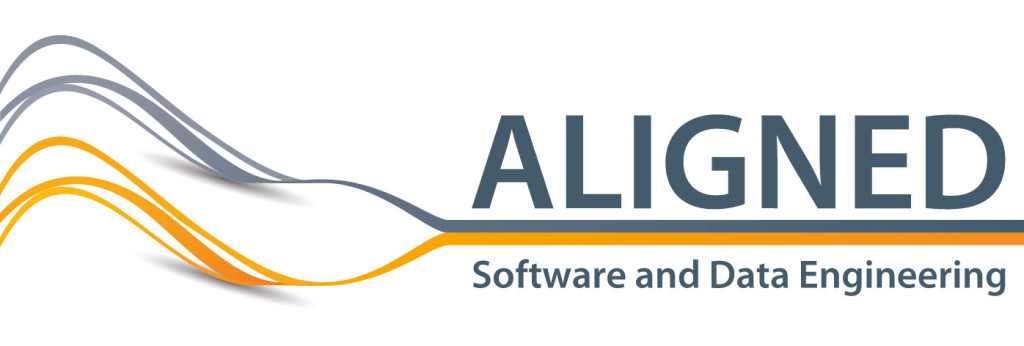
The ALIGNED project is a European Horizon 2020 research project which has brought together academic researchers and industry partners to develop some of the most promising results in computer science research into practical tools, that can be applied to solve real world problems and help organisations to leverage the great volume, variety and velocity of data that is available internally and through the web. ALIGNED lays the foundations for the next generation of big data systems that lower costs and deal with the web data challenges of dynamism, complexity, scale and inconsistency. ALIGNED extends model-driven software engineering techniques to encapsulate shared models of aligned co-evolving software and data lifecycles.
Website: http://aligned-project.eu/
Presenter at ESWC: Monika Solanki, Oxford University
Project contact for enquiries: Kevin Feeney, kevin.feeney@cs.tcd.ie
Funding instrument: H2020
Start date: 1st February 2015
Duration: 36 months
What we offer:
1. Data models for design intents, software and data engineering life cycles http://aligned-project.eu/data-and-models/
2. A better understanding of software and data engineering interaction in data-intensive systems
3. A suite of software tools for building data-intensive systems including: RDFUnit - a tool to validate dataset quality, Dacura - a dataset curation platform and UnifiedViews an RDF ETL tool.
4. Results derived from the deployment of our technology to support four major use cases in production systems.
5. ALIGNED consultancy program - program for offering consultancy services to EU businesses.
Link for more info: http://aligned-project.eu/
Usage rights: Almost all project deliverables (models, software, data) have an open license and are accessible via the project website. Re-use in other projects and activities is highly welcome. For further details, please contact the coordinator.
My project is interested in the following
1. Business use cases located in the integration point between software engineering and data engineering
2. Large datasets that require data quality enhancements and data curation
3. Tools that are complementary to the ALIGNED toolstack and can easily be leveraged beyond the project duration
What we are interested in:
- Projects that reuse and further develop the ALIGNED technology
- Projects that evaluate the ALIGNED technology and data models
- Datasets that we can integrate
What it must provide:
- Open license
- Free access
- Good documentation
- Direct contact for questions, feedback, etc.
How it would be used:
- Depending on the nature of the asset, we would include it into our tech and data stack or our evaluations studies
Data4UrbanMobility: Data Analytics for Mobility Services in Smart Cities
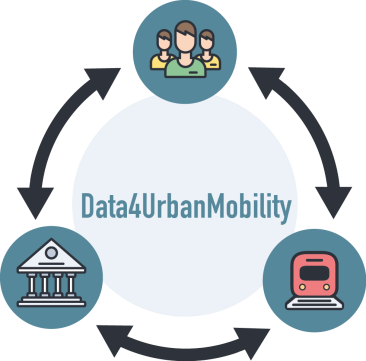
Data4UrbanMobility focuses on facilitating innovative mobility services and mobility-related infrastructure development in smart cities through comprehensive data analytics to benefit city councils, mobility service providers and city inhabitants. The methods and tools developed in the Data4UrbanMobility project aim to provide insights in the mobility demand in smart cities, facilitate efficient use of the existing mobility services and infrastructure, support development of innovative mobility-related services as well as facilitate effective planning of the mobility-relevant city infrastructure. To achieve this goal, Data4UrbanMobility platform will interlink and enrich heterogeneous data sources including regional data collections, open data and social media data using targeted Information Extraction, data integration and machine learning methods.
Website: http://data4urbanmobility.l3s.uni-hannover.de
Presenter at ESWC: Dr. Elena Demidova, L3S Research Center, Leibniz Universität Hannover, Germany.
Project contact for enquiries: Dr. Elena Demidova, demidova@L3S.de
Funding instrument: Federal Ministry of Education and Research, Germany (BMBF)
Start date: 01/03/2017
Duration: 3 years
What we offer: As one of the next steps we plan to develop an open regional event knowledge base and associated methods.
What it provides: This knowledge base will provide information on mobility-relevant events in a given city or region.
What we are interested in: Datasets in the area of mobility, use cases, and experience exchange with other projects.
What it must provide: We are particularly interested in datasets covering cities and urban areas in Lower Saxony, Germany, although other regions are of interest as well.
How it would be used: We will use datasets and knowledge to develop methods and tools to enhance mobility in cities and urban areas, facilitate efficient use of mobility services and enhance city infrastructure using data-driven methods.
Autonomous Learning of the Meaning of Objects (ALOOF)
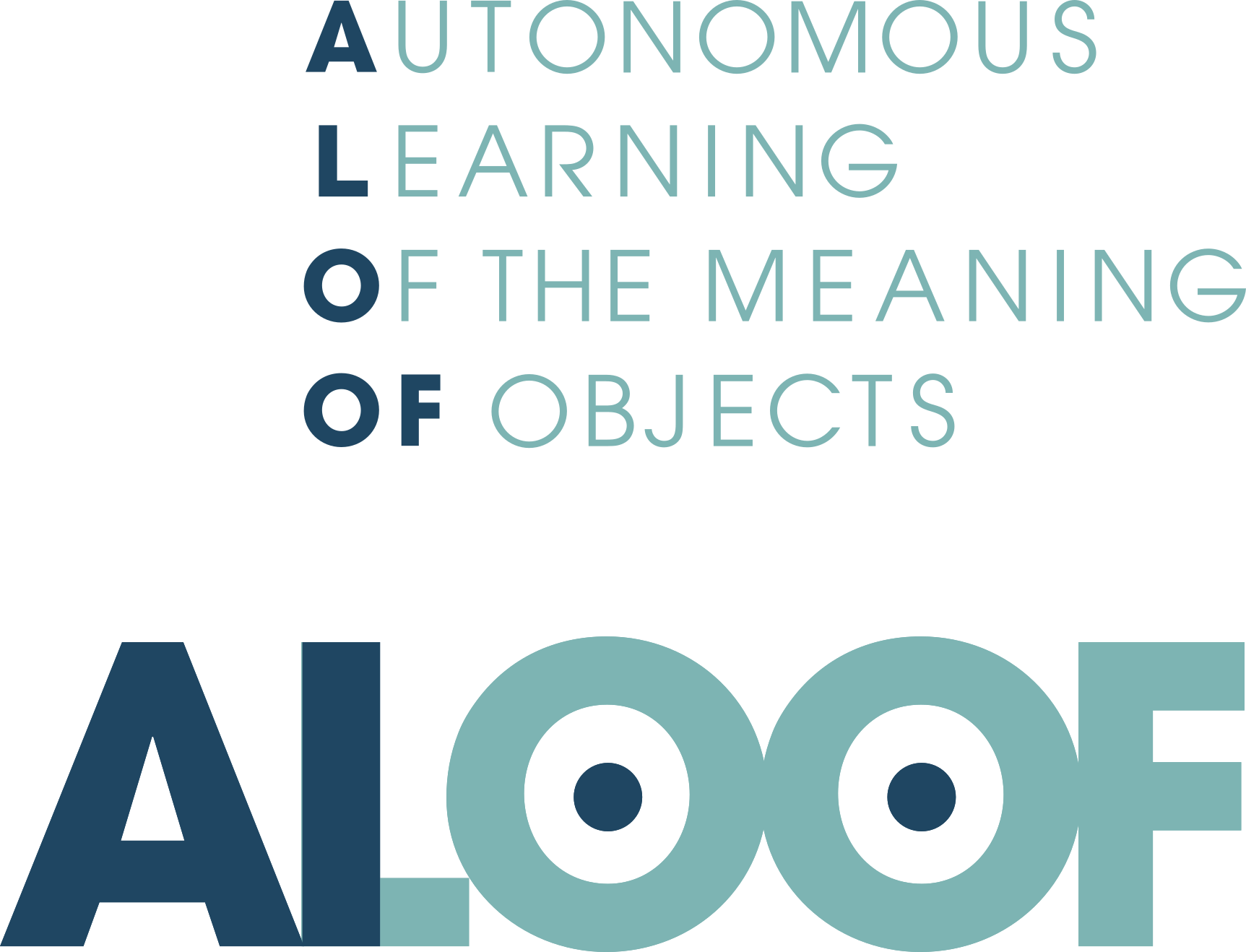
The goal of ALOOF is to equip autonomous systems with the ability to learn the meaning of objects, i.e. their perceptual and semantic properties and functionalities, from externalized knowledge sources accessible through the Web. To achieve this, we provide a mechanism for translating between the representations robots use in their real-world experience and those found on the Web. Our translation mechanism is a meta-modal representation (i.e. a representation which contains and structures representations from other modalities), composed of meta-modal entities and relations between them.
Website: https://project.inria.fr/aloof/
Presenter at ESWC: Valerio Basile, Inria
Project contact for enquiries: Barbara Caputo
Funding instrument: CHIST-ERA
Start date: 1/1/2014
Duration: 5 years
What we offer: Common sense RDF knowledge bases about objects
What it provides: a series of manually and automatically created datasets containing objects and locations from DBpedia and typical relations between them, such as "the butter knife is typically found in the kitchen".
Link for more info: https://project.inria.fr/aloof/data/
Usage rights (e.g. license): free for non-commercial use
KNEWS
What it provides: a software pipeline of NLP and Entity Linking tools for machine reading and frame instance extraction.
Link for more info: https://github.com/valeriobasile/learningbyreading
Usage rights (e.g. license): free software (GNU GPL)
Web service to support object and room identification
What it provides: suggestions of objects that are likely to be present at the scene that a robot is observing, and suggestions on what room the robot may be in, based on what objects it sees around it self.
Link for more info: https://hal.inria.fr/hal-01370140/document
Usage rights (e.g. license): free for non-commercial use
Robotic vision software packages for Knowledge-Acquisition
What it provides: Semantic Segmentation, Object Segmentation, Object Modeling, Object Recognition, Annotated Scene/Objects Datasets
Link for more info:
Tools: http://www.acin.tuwien.ac.at/forschung/v4r/software-tools/
Git: https://rgit.acin.tuwien.ac.at/root/v4r
Usage rights (e.g. license): MIT
What we are interested in: Common sense knowledge
What it must provide: knowledge bases containing commonsense knowledge about objects, locations, activities, situations, ... Possibly linked to large scale general knowledge bases such as DBpedia or YAGO.
How it would be used: to compare and complete the resource we are building: DeKO, a knowledge base of Default Knowledge about Objects.
Knowledge extraction tools
What it must provide: software to extract concepts and relations from text, images, databases and any other viable source. We are particularly interested in knowledge about generic entities (i.e., what can be found in a dictionary), rather than named entities (i.e., what can be found in an encyclopedia).
How it would be used: to extend and refine the resource we are building: DeKO, a knowledge base of Default Knowledge about Objects.
WDAqua - Answering Questions using Web Data (Skłodowska-Curie Innovative Training Network)

Sharing, connecting, analysing, and understanding data on the Web can provide better services to citizens, communities, and the industry; one way to achieve this is through data-driven Question Answering, by delivering precise and comprehensive answers to natural language questions, primarily by making better use of the knowledge encoded in the Web of Data. The aim of the WDAqua project - an Innovation Training Network for young data scientists - is to advance the state of the art in this field by interleaving training, research, and innovation. Eventually, WDAqua will provide an open source framework and ecosystem for question answering components, accessible for scientists, practitioners, and citizens.
Website: http://wdaqua.eu
Presenter at ESWC: Ioanna Lytra, University of Bonn
Project contact for enquiries: Ioanna Lytra,
Funding instrument: EU Horizon 2020, Marie Skłodowska-Curie Innovative Training Network (ITN)
Start date: 01/01/2015
Duration: 48 months
What we offer:
open Question Answering framework
What it provides: software framework for integrating QA components, open QA components
Link for more info: https://github.com/WDAqua/Qanary
Usage rights (e.g. license): open source (MIT License)
training events for PhD students
What it provides: tutorials, seminars, and presentations
Link for more info: https://wiss.univ-st-etienne.fr/en/index.html (upcoming event)
What we are interested in:
open QA components
What it must provide: independent QA components and integration to the open WDAqua QA framework
How it would be used: enrich the open WDAqua QA framework and improve QA in general
QA use cases
What it must provide: description of related use cases along with the datasets that will be used for QA
How it would be used: further use cases for validating and evaluating WDAqua results
Tutors
What it must provide: tutorials, seminars, and presentations
How it would be used: organisation of training events
EW-Shopp: Supporting Event and Weather-based Data Analytics and Marketing along the Shopper Journey

The EW-Shopp project aims at deploying and hosting a cross-lingual platform to easily integrate multilingual customer and market related data with weather and event data. Overall, the project will open up the door to a new generation of business intelligence services and market analyses, demonstrating the impact of such integration with several different business cases and by deploying new marketable services for a variety of stakeholders in the e-commerce, retail and marketing domains.
Website: http://www.ew-shopp.eu/
Presenter at ESWC: Matteo Palmonari, University of Milan-Bicocca
Project contact for enquiries: Matteo Palmonari, palmonari@disco.unimib.it
Funding instrument: H2020-EU.2.1.1. - ICT-14-2016-2017 - Big Data PPP: cross-sectorial and cross-lingual data integration and experimentation
Start date: 01-01-2017
Duration: 36 months
What we offer:
1) A platform to enrich proprietary data with external data, in particular about (but not limited to) weather and events, and then analyse these data using descriptive, predictive and visual analytics tools
2) Use cases of semantics used as means to support more advanced data analytics tasks in real-world and sensitive business environments
3) A platform that may support similar analysis in scientific contexts: e.g., study impact of events (or weather) on phenomenon X, by easing the enrichment of data about X with events (or weather) data
What it provides:
1) An open source DaaS platform, DataGraft++, which provides: repeatable data transformation pipelines, semantic table annotation features at schema and value level so as to publish data as Knowledge Graph in RDF, data cleansing and data quality insights, data enrichment widget based on linked data added to the source data, data hosting and querying.
2) An open source data summarization framework, ABSTAT, to produce summaries of published data and let users explore the data space
3) An open source predictive and descriptive data analytics library, QMiner
4) An open source descriptive and visual analytics tool, SpagoBI
5) A large scale dataset of semantically annotated events extracted from hundred thousands media sources, EventRegistry
Link for more info: http://ew-shopp.eu/
Usage rights (e.g. license): Tools will be open source, datasets will be not available as open sources; some features of the tools based on proprietary data (e.g., enrichment widget for events and weather data) may be available only upon subscription
What we are interested in:
1) More data to enrich proprietary data used in our business cases, with particular attention to statistical data about European administrative areas
2) Entity co-resolution software that can be plugged into our platform, possibly using APIs
What it must provide:
1) Access to data that can enrich analytics in the following domains: location intelligence and IoT (e.g., demographic data; tourism stats; and so on), sales and trend analysis (e.g., sales of or searches for specific products categories), digital advertising (e.g., campaign performance data)
2) Entity co-resolution technology that can be easily integrated with an external data management application.
How it would be used:
1) We would try using additional data to further enrich the data that will be used for analysis, thus augmenting the number of variables considered by the predictive and descriptive models defined in the project.
2) In the project we are more focused on integration processes and techniques that support the enrichment of tabular data; after data are published as linked data, we may want to use an entity co-resolution tools to discover further links among published data.
InVID - In Video Veritas, Verification of Social Media Video Content for the News Industry

InVID aim is to build a platform providing services to detect, authenticate and check the reliability and accuracy of newsworthy video files and video content spread via social media. It also assists journalist and content owners during rights clearance before User Generated Content reuse.
Website: http://www.invid-project.eu
Presenter at ESWC: Lyndon Nixon, MODUL Technology, Austria
Project contact for enquiries: Vasileios Mezaris, bmezaris@iti.gr
Funding instrument: H2020 Innovation Action
Start date: 1/1/2016
Duration: 36 months
My project can offer to others the following (tool, dataset, technology or business knowledge, max. 5 items)
What we offer: InVID Multimodal Analytics Dashboard
What it provides: The InVID Multimodal Analytics Dashboard is a visual search and information exploration platform to identify and track evolving stories across multiple social media platforms.
Link for more info: http://www.invid-project.eu/tools-and-services/
Demo: http://invid.weblyzard.com
Usage rights (e.g. license): Proprietary (https://www.weblyzard.com)
What we offer: On-line service for video fragmentation and annotation
What it provides: This experimental service lets you submit videos in various formats and perform visual analysis algorithms on them: shot segmentation, scene segmentation and visual concept detection.
Link for more info: http://multimedia2.iti.gr/onlinevideoanalysis/service/start.html
Usage rights (e.g. license): Proprietary (bmezaris@iti.gr)
What we offer: Rights Management Service
What it provides: This service aims to assist journalists through the process of clearing the copyright of User Generated Videos (UGV). It is based on the Copyright Ontology for rights modelling and automated reasoning.
Link for more info: http://rhizomik.net/html/ontologies/copyrightonto/
Usage rights (e.g. license): Copyright Ontology available under Creative Commons Attribution license (rgarcia@diei.udl.cat)
What we offer: InVID Context Aggregation and Analysis tool
What it provides: this service aims at assisting investigators in evaluating the credibility of videos posted online using contextual information from YouTube, Twitter and a third party weather API.
Link for more info: http://caa.iti.gr
Usage rights (e.g. license): Proprietary olgapapa@iti.gr, papadop@iti.gr)
What we offer: InVID Logo Detection tool
What it provides: this service scans images and videos for logos, and provides background information on the respective organizations or groups with which they are associated.
Link for more info: http://logos.iti.gr
Usage rights (e.g. license): Proprietary (markzampoglou@iti.gr)
My project is interested in the following (tool, dataset, technology or business knowledge, max. 5 items)
What we are interested in: tools for audio analysis from video, especially for speech to text
What it must provide: means to make sense of audio, especially spoken words, in noisy sources such as user generated video, outputting e.g. a transcript of what was spoken, topics associated with the sounds heard, language detection etc.
How it would be used: potential uptake by InVID partners to extend their video annotation capabilities
What we are interested in: tools for correction of noisy textual documents
What it must provide: means to input an automatically generated transcript from an audio track with errors and outputs a corrected transcript based on phonetics/NLP.
How it would be used: potential uptake by InVID partners to extend their video annotation capabilities
What we are interested in: scalable reasoning for copyright management based on Web ontologies like the Copyright Ontology
What it must provide: the semantic data store and reasoning tool should provide scalable reasoning to datasets containing hundreds of millions of triples and include mechanisms for Closed World Assumption reasoning.
How it would be used: it will be used to store content reuse policies and agreements, which will be used to check if intended uses are authorised or not.
